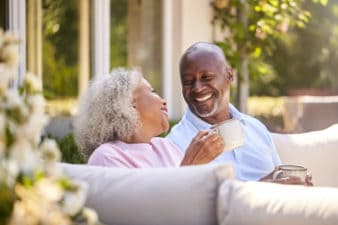It’s been a tough few months for oil investors. Crude prices have come crashing to earth with a resounding thud and there is growing speculation they may have further to fall with the Saudis savagely cutting prices to retain market share. Significantly softer oil prices are raising alarm bells among analysts around the sustainability of the monster dividend yields paid by many companies operating in Canada’s energy patch.
Once company that has recently attracted the ire of analysts because of its massive 7.3% yield and a 200% dividend payout ratio is Enerplus Corp. (TSX: ERF)(NYSE: ERF).
Let’s take a closer look at Enerplus to determine whether its yield is sustainable in the current operating environment.
Overall adjusted payout ratio exceeds 100%
The accepted methodology for calculating dividend sustainability is to calculate how much of the company’s net income is paid out in dividends. In the case of Enerplus this averages around 200%, making the dividend on initial appearances unsustainable, with dividend payments around double its reported net income.
But this is not always the best methodology to use, particularly for downstream oil producers that operate in an industry where cash, or more specifically funds flow, is king. Furthermore, when calculating net income it includes a number of non-cash line items, which distorts the true amount of cash available.
For these reasons, a more appropriate methodology is to calculate the payout ratio using dividends as a proportion of the company’s funds flow from operations, after deducting production sustaining capital expenditures. In the case of Enerplus this gives it a payout ratio of 120%, which is greater than its funds flow from operations and spells trouble for the dividend.
To date, Enerplus has been funding the shortfall through asset sales, with $186 million in asset sales since the start of 2014. But it can’t do this indefinitely, making it crucial for Enerplus to investigate other means of reducing outflows in order to preserve its funds flow from operations.
Thin operating margins leave little space to absorb lower crude prices
Another concern is Enerplus’ low operating margin or netback per barrel of crude produced. For the third quarter 2014 it reported a netback of $24.84 per barrel, which on initial appearances leaves little fat to absorb softer crude prices before its funds flow is adversely impacted.
But if we drill down a little deeper, we can see its netback from crude oil production for the same period was $47.79, indicating there is some room to absorb lower crude prices. The company wide netback falls to $24.84 per barrel because the majority or around 57% of Enerplus’ total petroleum production is comprised of lower margin natural gas.
And funnily enough before crude prices crashed, I would have criticized Enerplus for this with the margins on natural gas far lower than on oil and other crude liquids. But with natural gas prices now having recovered somewhat over the last year, this will help to shield Enerplus from the worst of the crude price crunch.
What does the future hold?
With crude prices at their lowest point in four years and West Texas Intermediate down by over 30% compared to its average spot price for 2013, it is going to be almost impossible for Enerplus to sustain funds flow growth. This means it will need to cut expenditures as a means of stabilizing its balance sheet and preserving capital.
The easiest means of doing this would be to take a knife to exploration and development capital expenditures or capex. But this would have an adverse impact on Enerplus’ long-term production growth, which is now a crucial means of making up for the shortfall in revenue created by lower crude prices.
The most obvious choice is to cut the dividend in order to reduce expenditures and stabilize its balance sheet. While this may earn Enerplus the ire of the market and see its share price slammed, it makes far better sense over the longer term than downsizing exploration and development programs.
 Stock Up Sale
Stock Up Sale







